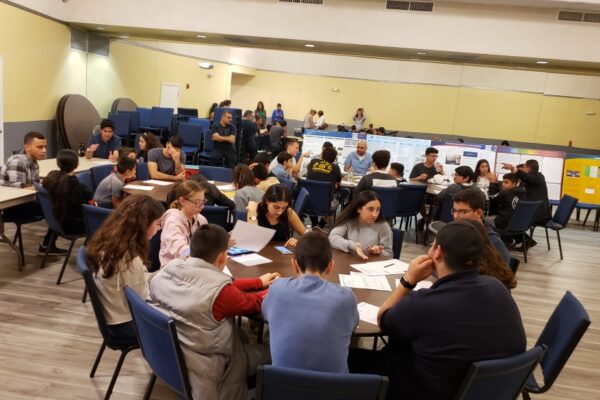Data science is more than just crunching numbers—it’s about telling stories with data that can change how we see the world. In 2025, the field is buzzing with opportunities to solve real-world problems using authentic datasets, from predicting customer churn to analyzing social media trends. Whether you’re a beginner looking to build a portfolio or an expert aiming to tackle complex challenges, these projects will sharpen your skills and make you stand out. Below, I’ve curated the top 10 data science projects for 2025, all based on real-world datasets, to inspire your next big idea. Each project is practical, engaging, and designed to flex your data science muscles. Let’s dive in!
Why Real-World Datasets Matter in Data Science
Real-world datasets are the lifeblood of impactful data science projects. Unlike synthetic or toy datasets, they reflect the messiness and complexity of actual problems, giving you a taste of what professionals face daily. Working with these datasets hones your ability to clean, analyze, and extract insights from imperfect data, making your skills more marketable. Plus, they’re a goldmine for building a portfolio that screams “I can handle the real stuff.”
My First Encounter with Real-World Data
When I first started in data science, I tackled a Kaggle dataset on customer churn. It was a mess—missing values, inconsistent formats, and outliers galore. But cleaning it up and building a predictive model felt like solving a puzzle. That project landed me my first freelance gig, proving that real-world datasets can open doors.
1. Predicting Customer Churn with Telco Data
Customer churn—when customers ditch a service—is a headache for businesses. Using the Telco Customer Churn dataset from Kaggle, you can build a model to predict who’s likely to leave. This project teaches you classification algorithms like logistic regression and random forests while addressing real business pain points.
Why It’s Great
This project is beginner-friendly yet impactful. You’ll practice data cleaning, feature engineering, and model evaluation using Python libraries like pandas and scikit-learn. It’s a portfolio must-have for anyone eyeing a role in business analytics.
Tools and Datasets
- Dataset: Telco Customer Churn (Kaggle)
- Tools: Python, pandas, scikit-learn, matplotlib
- Skills: Classification, exploratory data analysis (EDA), feature selection
2. Sentiment Analysis on Social Media Data
Ever wonder what people are saying about a trending topic on X? This project uses datasets like Twitter Sentiment Analysis from Kaggle to classify tweets as positive, negative, or neutral. It’s a fantastic intro to natural language processing (NLP) and text analysis.
Getting Started
You’ll fetch tweets using Tweepy, preprocess text with NLTK, and build a classifier with scikit-learn. The real-world aspect? Understanding public sentiment can help brands tailor their strategies. It’s like eavesdropping on the internet’s mood swings!
Pros and Cons
- Pros: Introduces NLP, uses real-time data, highly relevant for marketing roles
- Cons: Text data can be noisy, requires strong preprocessing skills
3. Forecasting Stock Prices with Time Series Analysis
Predicting stock prices is like trying to predict the weather—tricky but rewarding. Using Yahoo Finance’s historical stock data, you can apply time-series models like ARIMA or LSTM to forecast future prices. This project is perfect for finance enthusiasts.
What You’ll Learn
You’ll dive into time-series analysis, handling trends, and seasonality. Python libraries like pandas and Prophet make this accessible, but the real-world dataset keeps it challenging. Just don’t expect to get rich quick—stock markets are wild!
Comparison: ARIMA vs. LSTM
| Model | Strengths | Weaknesses |
|---|---|---|
| ARIMA | Simple, interpretable | Struggles with non-linear patterns |
| LSTM | Captures complex trends | Requires more data and compute power |
4. Credit Risk Analysis with Lending Club Data
Banks need to know who’s likely to default on a loan. Using Lending Club’s loan dataset, you can build a predictive model to assess credit risk. This project is a hit in the finance sector and showcases your ability to handle imbalanced datasets.
Why It’s Relevant
You’ll use logistic regression or gradient boosting to predict defaults, learning to deal with real-world issues like class imbalance. It’s a project that screams “I understand business impact” to employers.
Where to Get the Data
- Source: Lending Club Loan Data (Kaggle)
- Libraries: scikit-learn, XGBoost, imbalanced-learn
5. Image Classification with MNIST or CIFAR-10
Want to dip your toes into computer vision? The MNIST (handwritten digits) or CIFAR-10 (object images) datasets are perfect for building image classification models using convolutional neural networks (CNNs). These datasets are classics but still relevant in 2025.
The Fun Part
Training a CNN with TensorFlow or Keras feels like teaching a computer to “see.” I once built a model to recognize handwritten digits for a school project—it was thrilling to watch it identify my terrible 7s! This project is great for beginners and experts alike.
Tools and Skills
- Datasets: MNIST, CIFAR-10 (Kaggle or TensorFlow)
- Tools: TensorFlow, Keras, matplotlib
- Skills: CNNs, image preprocessing, model evaluation
6. Analyzing Netflix Data for User Insights
Netflix’s user data is a treasure trove for understanding viewing habits. Using the Netflix Originals dataset from Kaggle, you can perform EDA to uncover trends in genres, ratings, or viewer preferences. This project is a visual storytelling masterpiece.
How to Shine
Use libraries like Seaborn and Tableau to create stunning visualizations. For example, you might discover that sci-fi movies peak in summer—perfect for pitching to streaming platforms. It’s a fun way to blend creativity with analytics.
People Also Ask: Common Questions
- What is the Netflix dataset used for? It’s used for EDA, visualization, and recommendation system projects.
- Where can I find the Netflix dataset? Check Kaggle for the Netflix Originals dataset.
- What tools are best for Netflix data analysis? Python (pandas, Seaborn) and Tableau are top picks.
7. Fraud Detection in Credit Card Transactions
Credit card fraud is a growing issue, affecting millions globally. Using a dataset like the Credit Card Fraud Detection dataset from Kaggle, you can build a model to spot suspicious transactions. This project is a must for anyone interested in cybersecurity.
The Challenge
The dataset is highly imbalanced—fraud cases are rare. You’ll learn to use techniques like SMOTE and anomaly detection to tackle this. It’s like being a digital detective, catching bad actors in the act
Pros and Cons
- Pros: High-impact, teaches anomaly detection, real-world relevance
- Cons: Requires handling imbalanced data, complex evaluation metrics
8. Recommender System for E-Commerce
Ever notice how Amazon knows exactly what you want to buy? Build a recommender system using the Amazon Reviews dataset to suggest products based on user behavior. This project dives into collaborative filtering and content-based methods.
Why It’s Cool
You’ll use libraries like Surprise or LightFM to create personalized recommendations. I built a mini-recommender for a local bookstore’s website, and seeing it suggest the perfect mystery novel was pure magic. This project is a portfolio game-changer.
Tools and Datasets
- Dataset: Amazon Reviews (Kaggle)
- Tools: Surprise, pandas, scikit-learn
- Skills: Collaborative filtering, matrix factorization
9. Road Accident Severity Prediction
With urbanization on the rise, road safety is critical. Using datasets like the UK Department for Transport’s road accident data, you can predict accident severity based on factors like weather and road conditions. This project has real-world impact.
Making a Difference
You’ll use classification models like decision trees or neural networks to predict outcomes. It’s a project that could influence city planning or insurance policies—pretty powerful stuff
Comparison: Decision Trees vs. Neural Networks
| Model | Strengths | Weaknesses |
|---|---|---|
| Decision Trees | Easy to interpret, fast | Prone to overfitting |
| Neural Networks | Handles complex patterns | Requires more data, harder to tune |
10. Mental Health Analysis with Survey Data
Mental health is a pressing issue in 2025, especially in high-stress industries. Using OSMI’s Mental Health Survey dataset, you can analyze patterns in workplace mental health and identify support gaps. This project combines social good with data science.
Why It Matters
You’ll use statistical tests like chi-square and classification models to uncover insights. I worked on a similar project and found that flexible work hours correlated with better mental health—eye-opening! This project is perfect for socially conscious data scientists.
Where to Start
- Dataset: OSMI Mental Health Survey (Kaggle)
- Tools: pandas, scikit-learn, seaborn
- Skills: Statistical analysis, classification, visualization
How to Choose the Right Project for You
Picking a project depends on your skill level and interests. Beginners should start with EDA-focused projects like Netflix data analysis, while experts can tackle complex tasks like fraud detection. Passion matters—choose a domain like healthcare or finance that excites you. Ensure you have access to datasets (Kaggle, UCI, or GitHub) and tools like Python or R. Here’s a quick guide:
- Beginner: Customer churn, Netflix EDA
- Intermediate: Sentiment analysis, recommender systems
- Advanced: Fraud detection, road accident prediction
Best Tools for Data Science Projects in 2025
To make your projects shine, you’ll need the right tools. Here’s a rundown of the best ones for 2025:
| Tool | Best For | Free/Paid |
|---|---|---|
| Python | General-purpose, ML, NLP | Free |
| R | Statistical analysis | Free |
| Tableau | Data visualization | Paid (free trial) |
| Jupyter | Interactive coding | Free |
| Google Colab | Cloud-based ML | Free |
For beginners, Python with Jupyter is a no-brainer—it’s free, versatile, and widely used. Experts might lean toward Tableau for stunning visuals or Google Colab for heavy computations.
Where to Find Real-World Datasets
Finding quality datasets is half the battle. Here are the best sources in 2025:
- Kaggle: Massive repository of datasets like Telco Churn and Netflix Originals.
- UCI Machine Learning Repository: Classic datasets like MNIST and Wine Quality.
- GitHub: Home to user-contributed datasets and project code.
- World Bank Open Data: Great for economic and demographic data.
Pro tip: Always check the dataset’s license and ensure it’s from a reputable source to avoid legal hiccups.
People Also Ask (PAA) Section
What are real-world datasets in data science?
Real-world datasets are collections of data from actual events or systems, like customer transactions or social media posts. They’re messy, diverse, and perfect for practicing real-life data science skills.
How do I start a data science project?
Define a problem, choose a dataset, clean and preprocess the data, perform EDA, and build a model. Use tools like Python or R, and document your process in a GitHub portfolio.
Where can I find free datasets for data science?
Kaggle, UCI Machine Learning Repository, and GitHub offer free, high-quality datasets. The World Bank Open Data is another excellent source for public datasets.
What are the best tools for data science projects?
Python (with pandas, scikit-learn, and TensorFlow) is the go-to for most projects. R, Tableau, and Jupyter Notebooks are also great for stats, visualization, and coding.
FAQ Section
What skills do I need for data science projects?
You’ll need data cleaning, EDA, visualization, and modeling skills. Proficiency in Python or R, plus libraries like pandas, scikit-learn, and matplotlib, is essential. Familiarity with SQL and Tableau is a bonus.
How long does a data science project take?
It depends on complexity. Simple EDA projects might take a few hours, while advanced ML projects could take weeks. Plan for 10–40 hours based on your skill level and project scope.
Can beginners do these projects?
Absolutely! Start with simpler projects like Netflix EDA or customer churn prediction. They teach core skills without overwhelming you. Kaggle’s beginner datasets are a great starting point.
How do I showcase my data science projects?
Create a GitHub repository with clean code, a detailed README, and visualizations. Share your findings on LinkedIn or a personal blog to attract employers.
Why are real-world datasets better than synthetic ones?
Real-world datasets mimic actual problems, with missing values, outliers, and noise. They prepare you for professional challenges and make your portfolio more credible to employers.
Wrapping Up: Your Data Science Journey Starts Here
These 10 data science projects for 2025 are more than just resume-builders—they’re your chance to make a real impact. From predicting churn to analyzing mental health trends, each project tackles a problem that matters. My first project analyzing restaurant reviews taught me that data isn’t just numbers; it’s people’s stories, preferences, and behaviors. Pick a project that sparks your curiosity, grab a dataset from Kaggle or UCI, and start exploring. The data science world is waiting for you to leave your mark!





